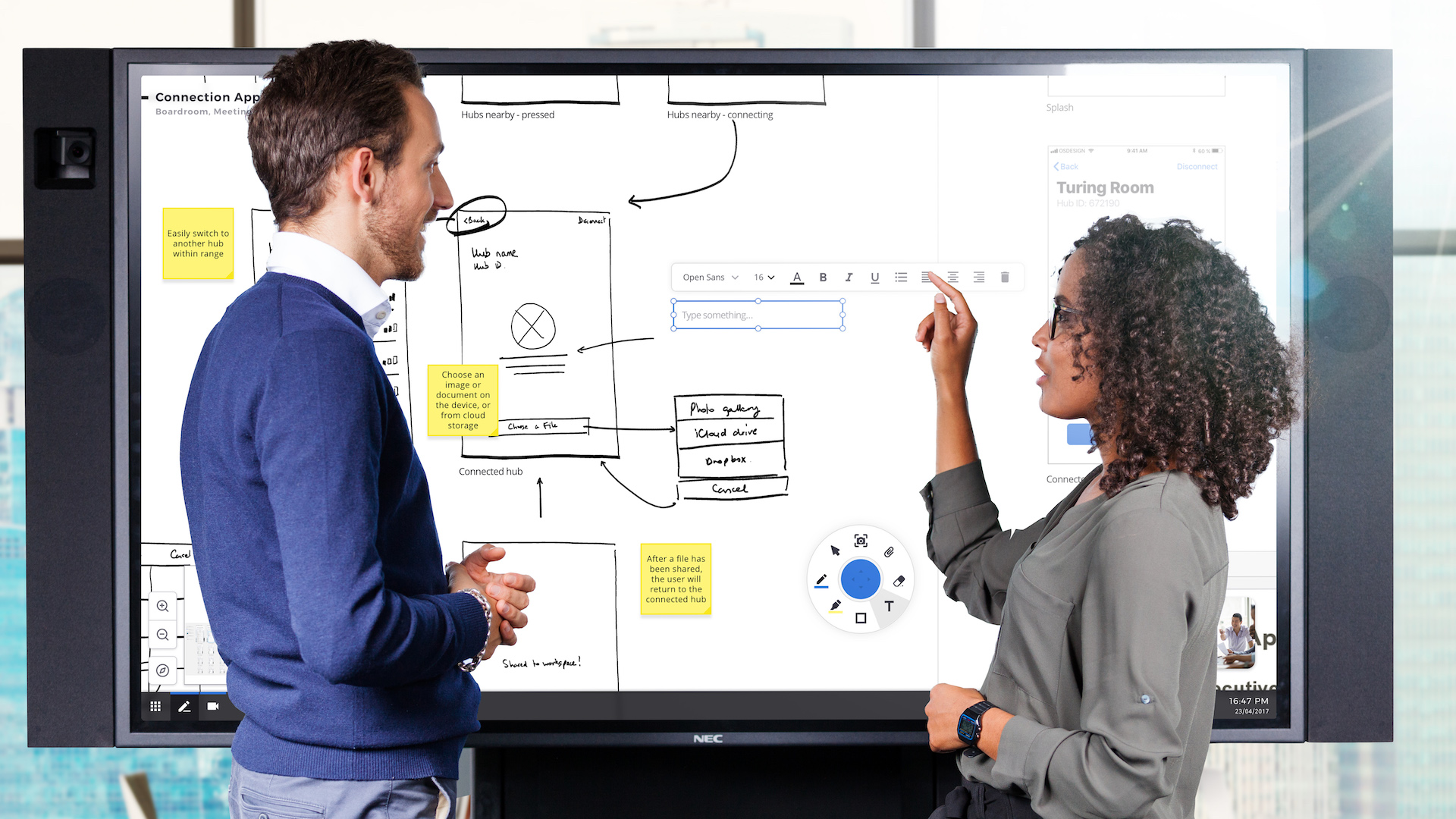In the majority of K-12 schools, instruction is moving away from a teacher-centric approach—in which the instructor stands at the front of the room and delivers information—and toward a student-centric model, where students take ownership of their learning and the teacher acts as a guide or facilitator.

To match this new model of active learning, schools need technology that will bring clear, detailed visuals into classrooms, engaging students and enhancing lessons with vivid imagery. Ed tech also should encourage a hands-on learning approach, making it easy for students to collaborate through the seamless sharing of images, videos, and ideas with peers, both in the classroom and from their homes.
These considerations for implementing interactive whiteboards, touchscreens, digital displays and projectors will help guide IT departments and AV professionals.
Interactive Whiteboards and Touchscreens
The 21st-century version of the schoolhouse blackboard allows teachers to present information—including notes written in real time—in a much more engaging way than chalk ever could. These screens are virtually endless canvases that display images and allow participants to mark up what they see, taking notes and moving pieces around to make learning a tactile experience. These boards also have the ability to connect with other classrooms across the school district—or around the world—and share ideas in a more collaborative way.
When it comes to the software that runs these touchscreens, programs like FlatFrog Whiteboard are great for notetaking and other tasks, promoting discussion and idea sharing. Connectivity-enabled touchscreens take collaboration a step further; using software like Mosaic Connect, which comes preloaded in the NEC CB Series Collaboration Board and the NEC InfinityBoard, students can share content from any device wirelessly.
Software that is operating system-agnostic is often a good choice in schools with multiple types of devices and/or operating systems, as it is compatible with Mac/iOS, Windows, Chrome OS, and Android. This provides the simplest integration and ensures every student can connect.
Digital Displays and Projectors
Because the majority of students now carry a high-definition screen in their pockets, they’re used to visual quality—so bright, vivid HD displays in the classroom have become a necessity. Digital displays add a refreshing element to the learning experience, and eye-catching HD imagery creates a unique interaction that promotes discussion among the class.
HD digital displays should be able to connect to other devices, so students can share relevant content on them. Consider large-format displays or ultra-short-throw laser projectors for the most return on your investment, and to ensure the screen is big enough for the entire class to see.
How to Decide
Consider the collaboration software early in the planning process. Great hardware requires thoughtful software to run properly, and when choosing a display technology, look for products that come pre-loaded with robust collaboration software that allows both teachers and students to easily share information to a display. The best solutions will also offer teachers an easy way to monitor student progress and encourage communication across a range of devices.
The importance of clear HD visuals can’t be understated, either. Whether it’s a slideshow of the Great Wall of China, a video about the ancient Egyptian history, or an interactive map of a solar system, crisp images can create an emotional response in students, leading to better lesson retention.
In modern K-12 education, technology plays a critical role in everyday learning, going beyond the lecture to make information resonate and bringing new levels of engagement to a classroom. Schools can ignite students’ passion for learning with classroom technologies—including digital whiteboards, projectors, or large-format displays—that allow students to collaborate with each other and with their instructor.
Chris Feldman is product manager for NEC Display Solutions of America.